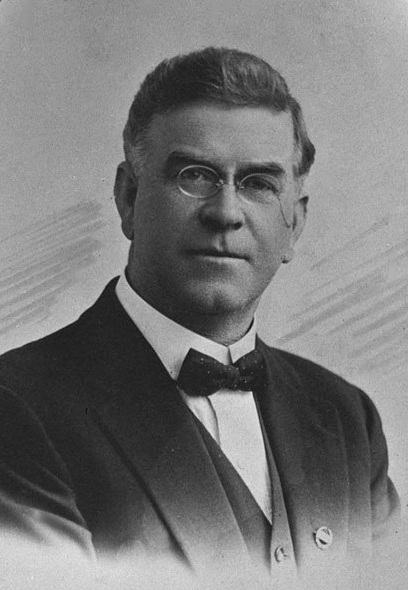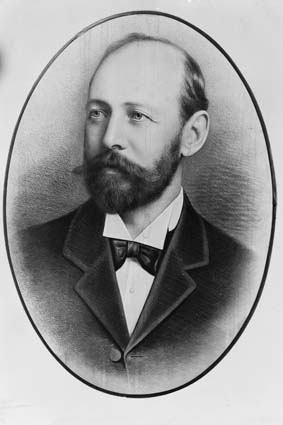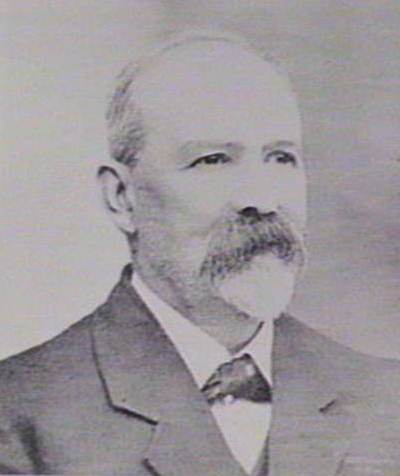|
1917 New South Wales State Election
The 1917 New South Wales state election was held on 24 March 1917. This election was for all of the 90 seats in the 24th New South Wales Legislative Assembly and it was conducted in single-member constituencies with a second ballot if a majority was not achieved on the first. The 23rd parliament of New South Wales was dissolved on 21 February 1917 by the Governor, Sir Gerald Strickland, on the advice of the Premier William Holman. Since the previous election, Premier Holman had left the Labor Party with 17 of his supporters and entered into a coalition with the opposition Liberal Party, as a result of the 1916 conscription dispute that split the Labor Party nationally. In early 1917, Holman's supporters merged with the Liberals to form the New South Wales branch of the Nationalist Party. Although the merged party was dominated by former Liberals, Holman became its leader, and thus remained premier. The Nationalists won a sweeping victory, scoring a 13-seat swing which was ma ... [...More Info...] [...Related Items...] OR: [Wikipedia] [Google] [Baidu] |
New South Wales Legislative Assembly
The New South Wales Legislative Assembly is the lower of the two houses of the Parliament of New South Wales, an Australian state. The upper house is the New South Wales Legislative Council. Both the Assembly and Council sit at Parliament House in the state capital, Sydney. The Assembly is presided over by the Speaker of the Legislative Assembly. The Assembly has 93 members, elected by single-member constituency, which are commonly known as seats. Voting is by the optional preferential system. Members of the Legislative Assembly have the post-nominals MP after their names. From the creation of the assembly up to about 1990, the post-nominals "MLA" (Member of the Legislative Assembly) were used. The Assembly is often called ''the bearpit'' on the basis of the house's reputation for confrontational style during heated moments and the "savage political theatre and the bloodlust of its professional players" attributed in part to executive dominance. History The Legislati ... [...More Info...] [...Related Items...] OR: [Wikipedia] [Google] [Baidu] |
Australian Labor Party (New South Wales Branch)
The Australian Labor Party (New South Wales Branch), also known as NSW Labor, is the New South Wales branch of the Australian Labor Party. The parliamentary leader is elected from and by the members of the party caucus, comprising all party members in the Legislative Assembly and Legislative Council. The party factions have a strong influence on the election of the leader. The leader's position is dependent on the continuing support of the caucus (and party factions) and the leader may be deposed by failing to win a vote of confidence of parliamentary members. By convention, the premier sits in the Legislative Assembly, and is the leader of the party controlling a majority in that house. The party leader also typically is a member of the Assembly, though this is not a strict party constitutional requirement. Barrie Unsworth, for example, was elected party leader while a member of the Legislative Council. He then transferred to the Assembly by winning a seat at a by-election. ... [...More Info...] [...Related Items...] OR: [Wikipedia] [Google] [Baidu] |
1917 Elections In Australia
Events Below, the events of World War I have the "WWI" prefix. January * January 9 – WWI – Battle of Rafa: The last substantial Ottoman Army garrison on the Sinai Peninsula is captured by the Egyptian Expeditionary Force's Desert Column. * January 10 – Imperial Trans-Antarctic Expedition: Seven survivors of the Ross Sea party were rescued after being stranded for several months. * January 11 – Unknown saboteurs set off the Kingsland Explosion at Kingsland (modern-day Lyndhurst, New Jersey), one of the events leading to United States involvement in WWI. * January 16 – The Virgin Islands, Danish West Indies is sold to the United States for $25 million. * January 22 – WWI: United States President Woodrow Wilson calls for "peace without victory" in Germany. * January 25 ** WWI: British armed merchantman is sunk by mines off Lough Swilly (Ireland), with the loss of 354 of the 475 aboard. ** An anti-prostitution drive in Prostitution in t ... [...More Info...] [...Related Items...] OR: [Wikipedia] [Google] [Baidu] |
Elections In New South Wales
An election is a formal group decision-making process by which a population chooses an individual or multiple individuals to hold public office. Elections have been the usual mechanism by which modern representative democracy has operated since the 17th century. Elections may fill offices in the legislature, sometimes in the executive and judiciary, and for regional and local government. This process is also used in many other private and business organisations, from clubs to voluntary associations and corporations. The global use of elections as a tool for selecting representatives in modern representative democracies is in contrast with the practice in the democratic archetype, ancient Athens, where the elections were considered an oligarchic institution and most political offices were filled using sortition, also known as allotment, by which officeholders were chosen by lot. Electoral reform describes the process of introducing fair electoral systems where they are no ... [...More Info...] [...Related Items...] OR: [Wikipedia] [Google] [Baidu] |
Members Of The New South Wales Legislative Assembly, 1917–1920
Members of the New South Wales Legislative Assembly who served in the 24th parliament of New South Wales held their seats from 1917 to 1920. They were elected at the 1917 state election on 24 March 1917. Speaker was John Cohen until 19 August 1919 when he was succeeded by Daniel Levy. See also * Second Holman ministry *Results of the 1917 New South Wales state election The 1917 New South Wales state election involved 90 electoral district returning one member each. If a candidate failed to achieve at least 50% of the vote in an electorate, a run-off election would take place in the following weeks. In this ele ... * Candidates of the 1917 New South Wales state election References {{DEFAULTSORT:Members of the New South Wales Legislative Assembly, 1917-1920 Members of New South Wales parliaments by term 20th-century Australian politicians ... [...More Info...] [...Related Items...] OR: [Wikipedia] [Google] [Baidu] |
Candidates Of The 1917 New South Wales State Election
This is a list of candidates for the 1917 New South Wales state election. The election was held on 24 March 1917. During the previous parliament, the Labor Party had split over the conscription issue, with Premier William Holman leading many members into the new Nationalist Party, a merger of the pro-conscriptionist Labor members and the Liberal Party. Seats held by the ex-Labor Nationalists are shown as being Labor-held. Retiring Members Labor *Ernest Durack MLA ( Bathurst) Nationalist *Henry Hoyle MLA (Surry Hills) — elected as Labor * James Mercer (Rozelle) — elected as Labor *Charles Wade MLA (Gordon) Legislative Assembly Sitting members are shown in bold text. Successful candidates are highlighted in the relevant colour. Where there is possible confusion, an asterisk (*) is also used. See also * Members of the New South Wales Legislative Assembly, 1917–1920 References * {{cite web , author-link=Antony Green , last=Green , first=Antony , url=https://www. ... [...More Info...] [...Related Items...] OR: [Wikipedia] [Google] [Baidu] |
1917 Australian Federal Election
The 1917 Australian federal election was held in Australia on 5 May 1917. All 75 seats in the House of Representatives and 18 of the 36 seats in the Senate were up for election. The incumbent Nationalist Party, led by Prime Minister Billy Hughes, defeated the opposition Labor Party led by Frank Tudor in a landslide. Hughes, at the time a member of the ALP, had become prime minister when Andrew Fisher retired in 1915. The Australian Labor Party split of 1916 over the conscription issue had led Hughes and 24 other pro-conscription Labor MPs to split off as the National Labor Party, which was able to form a minority government supported by the Commonwealth Liberal Party under Joseph Cook. Later that year, National Labor and the Liberals merged to form the Nationalist Party, with Hughes as leader and Cook as deputy leader. The election was fought in the aftermath of the 1916 plebiscite on conscription, which had been narrowly defeated. The Nationalists won a decisive victory, ... [...More Info...] [...Related Items...] OR: [Wikipedia] [Google] [Baidu] |
Nationalist Party (Australia)
The Nationalist Party, also known as the National Party, was an Australian political party. It was formed on 17 February 1917 from a merger between the Commonwealth Liberal Party and the National Labor Party, the latter formed by Prime Minister Billy Hughes and his supporters after the 1916 Labor Party split over World War I conscription. The Nationalist Party was in government (from 1923 in coalition with the Country Party) until electoral defeat in 1929. From that time it was the main opposition to the Labor Party until it merged with pro-Joseph Lyons Labor defectors to form the United Australia Party (UAP) in 1931. The party is a direct ancestor of the Liberal Party of Australia, the main centre-right party in Australia. History In October 1915 the Australian Prime Minister, Andrew Fisher of the Australian Labor Party, retired; Billy Hughes was chosen unanimously by the Labor caucus to succeed him. Hughes was a strong supporter of Australia's participation in Worl ... [...More Info...] [...Related Items...] OR: [Wikipedia] [Google] [Baidu] |
Liberal Reform Party (Australia)
The Liberal Reform Party was an Australian political party, active in New South Wales state politics between 1901 and 1916. It drew much of its support from Protestant and Temperance groups. History The question of tariff policy which, had created and divided the Free Trade Party and Protectionist Party in New South Wales in the 1890s, became a federal issue at the time of federation. Deprived of their main ideological difference, the two parties were recreated as the Liberal Reform Party, aligned with the federal Free Trade Party, and the Progressive Party, aligned with the federal Protectionist Party. The Progressive Party's vote collapsed at the 1904 election and many of its members then joined the Liberal Reform Party. By 1907, the Liberal Reform Party was left as the main centre-right party in New South Wales. In 1916, the Liberal Reform Party formed a coalition with the pro-conscription elements of the state Labor Party under Premier William Holman. In 1917, Liberal Re ... [...More Info...] [...Related Items...] OR: [Wikipedia] [Google] [Baidu] |
Gerald Strickland, 1st Baron Strickland
Gerald Paul Joseph Cajetan Carmel Antony Martin Strickland, 6th Count della Catena, 1st Baron Strickland, (24 May 1861 – 22 August 1940) was a Maltese and British politician and peer, who served as Prime Minister of Malta, Governor of the Leeward Islands, Governor of Tasmania, Governor of Western Australia and Governor of New South Wales, in addition to sitting successively in the House of Commons and House of Lords in the Parliament of the United Kingdom. Early life Strickland was born in Valletta, the son of naval officer Commander Walter Strickland, from the ancient English Strickland family of Sizergh, and Maria Aloysia Bonici-Mompalao, the niece and heiress of Sir Nicholas Sceberras Bologna, fifth Count della Catena in Malta, whom Gerald succeeded in 1875. He was educated at St Mary's College, Oscott, and Trinity College, Cambridge (BA, LLB). Upon graduating, he was admitted to Inner Temple in 1887 entitled to practise as a barrister-at-law. He gained the rank o ... [...More Info...] [...Related Items...] OR: [Wikipedia] [Google] [Baidu] |
John Storey Cropped
John is a common English name and surname: * John (given name) * John (surname) John may also refer to: New Testament Works * Gospel of John, a title often shortened to John * First Epistle of John, often shortened to 1 John * Second Epistle of John, often shortened to 2 John * Third Epistle of John, often shortened to 3 John People * John the Baptist (died c. AD 30), regarded as a prophet and the forerunner of Jesus Christ * John the Apostle (lived c. AD 30), one of the twelve apostles of Jesus * John the Evangelist, assigned author of the Fourth Gospel, once identified with the Apostle * John of Patmos, also known as John the Divine or John the Revelator, the author of the Book of Revelation, once identified with the Apostle * John the Presbyter, a figure either identified with or distinguished from the Apostle, the Evangelist and John of Patmos Other people with the given name Religious figures * John, father of Andrew the Apostle and Saint Peter * Pope Joh ... [...More Info...] [...Related Items...] OR: [Wikipedia] [Google] [Baidu] |
Governor Of New South Wales
The governor of New South Wales is the viceregal representative of the Australian monarch, King Charles III, in the state of New South Wales. In an analogous way to the governor-general of Australia at the national level, the governors of the Australian states perform constitutional and ceremonial functions at the state level. The governor is appointed by the king on the Advice (constitutional), advice of the premier of New South Wales, and serves in office for an unfixed period of time—known as serving ''At His Majesty's pleasure''—though five years is the general standard of office term. The current governor is retired jurist Margaret Beazley, who succeeded David Hurley on 2 May 2019. The office has its origin in the 18th-century colonial governors of New South Wales upon its settlement in 1788, and is the oldest continuous institution in Australia. The present incarnation of the position emerged with the Federation of Australia and the ''New South Wales Constitution Act 1 ... [...More Info...] [...Related Items...] OR: [Wikipedia] [Google] [Baidu] |







.jpg)
